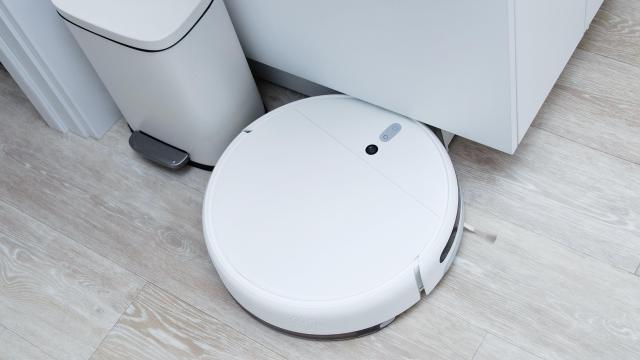I love my Roomba, and I hate my Roomba. The endearing little beeps and boops, the hypnotic but inexplicable path it takes across my floor, the possibility of training woodland animals to ride it across the floor…there’s a lot to like. But, three years into its use, I have some bones to pick. Here are all the things they don’t tell you about getting a robot vacuum cleaner (of any brand) that you should consider before you commit to one.
The cost of maintenance
Robot vacuum cleaners have a lot of parts, and those parts have to be replaced. I suspected as much, but I wasn’t prepared for how often I’d be ordering the components and how expensive they are. The main rollers, which I’d expected to replace yearly or maybe even every six months, are easily foiled by even a few long hairs, splitting them in half every two months. The bags for the self-emptying tower are meant to ensure you don’t have to manually empty your robot almost never last more than a month or two, and occasionally, you need to manually empty them, anyways.
Beyond replacing the parts, it turns out the thing that cleans also needs to be cleaned. I was on the phone with iRobot three or four times within the first year for various issues, and often the answer was to take it apart and clean it. It’s not hard to do — you just need a screwdriver or drill — but I didn’t plan for that much upkeep.
There are aftermarket parts that cost less, and for the rollers and brushes, they work pretty decently, but the aftermarket tower bags are often reported to be full, even though I’d just installed them. The Braava (the mopping mate to the Roomba) at least has reusable pads you can purchase, wash, and reuse. But all of these purchases both raised the cost of upkeep and contributed to a lot of waste, which I bought the vacuum to avoid.
It gets stuck
You’ve likely seen adorable IGs of robot vacuum cleaners reporting to be on a cliff somewhere, coupled with a picture of it hanging off a three-inch ledge. That’s not entirely inaccurate: They have a lot more trouble with thresholds (those strips that separate the floor between rooms) than anyone reports. My vacuum often bumps into table legs or doors endlessly before just turning around, and even though I bought low-profile rugs specifically to make their life easier, the edges of those rugs are now fraying from, you guessed it, the vacuum cleaner.
A robot vacuum cleaner getting itself stuck is actually one of the most frustrating aspects of the lifestyle. You imagine it vacuuming your house while you’re out or before you get up in the morning, politely docking itself to charge up for the next day; instead, it got stuck underneath a couch yet again. It needs to be babysat more than you would have anticipated. I’ve relocated everything I could off the floor and raised everything high enough for it to cruise under easily, but it’s still not like I can go on vacation and expect the vacuum to keep going while I’m gone.
They require more hands-on assistance than I expected
I imagined, many years ago, a world in which I had a robot vacuum and mop, and at night, they’d have epic battles on the living room floor while I slept. It’s what I thought of when I purchased the Roomba and its mate, the Braava, which mops. The problem is, Roomba can go most places except upstairs and Braava can only stay within one room and clean it, but it can’t go over a threshold, so they’re fairly limited to what they can accomplish completely on their own.
Also, as excited as I was about touchless cleaning, the Braava requires you to take a new pad, put it on, and refill the cleaning solution for every single cleaning, and then it basically takes that pad and wipes it across the whole floor. Other systems outside of iRobot, like the Narwhal, have reservoirs for both clean and dirty water, so they’re never just wiping one dirty rag around the tile.
Both the Roomba and Braava allow you to set up zones, which you can then call from Google Assistant. But it’s not quick, and between getting the app open or getting Google to recognise the command, it’s usually faster to just clean up whatever mess you made yourself. Even when called, the Roomba would often not actually get the whole thing, and it would then mean I had to stay out of its way for an hour, while I repeatedly bopped it on the nose to get it to repeat the same area it’d just done. As for the Braava, you can’t summon it anywhere if there’s a threshold, so it’s really only good for putting down in the middle of the space you want to clean; letting it clean unless it gets stuck, runs out of fluid, or needs to make a second pass (often the case); then picking it up and putting it back on its dock.
For what it’s worth, my Roomba is still in service. Each morning I hear it start up at 7 a.m., reminding me that every day is a new chance to succeed in life. Occasionally, it will bark commands at me to empty it, find it, or just repeat some numerical error I need to look up. But by 9 a.m., it has completed a run, and it’s gotten up a decent amount of the dirt and dust that aren’t near the walls, and then I return with my stick vacuum to get everything it missed.
